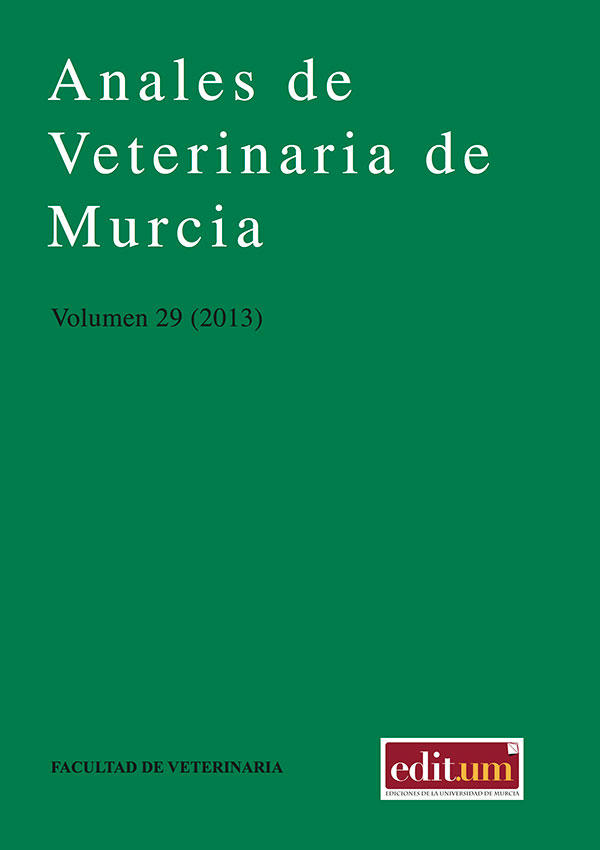«Humpy-backed» pigs’ syndrome in Spain
Abstract
«Humpy-backed» pigs’ syndrome was firstly described in the United Kingdom in 1984. The syndrome has been reported in a few countries, but the ethiology and pathogenesis remains unclear. This report describes the appearance of «humpy-backed» piglets aetiology in the nursery of a 3800-sow farm in Northeast Spain. The problem affected around 3% of the weekly offspring from one particular genetic line present on the farm composed of 450 sows. The incidence reached peaks of 9-11% in some weeks. The piglets appeared depressed, with rough hair coat and progressive clinical deterioration. In the necropsy, despite the appearance of lordosis, no defect in the bones and joint of the vertebral spine were detected. Lympho-plasmacytic periarteritis was observed in heart, spleen, gut, liver, kidney, skeletal muscle, lung and meninges. Lympho-plasmacytic myocarditis and skeletal myositis with muscular fibre degeneration was also observed. The macroscopic appearance of lordosis was associated with a multiorganic inflammatory cell infiltration. There was an association with the genetic background of the affected animals although seropositivity to porcine circovirus type 2 (PCV2) and porcine reproductive and respiratory syndrome virus (PRRSV) was also found in the farm, pointing to a possible implication of viral infection in the pathogenesis of the syndrome.Downloads
Creative Commons Attribution 4.0
The works published in this journal are subject to the following terms:
1. The Publications Service of the University of Murcia (the publisher) retains the property rights (copyright) of published works, and encourages and enables the reuse of the same under the license specified in paragraph 2.
© Servicio de Publicaciones, Universidad de Murcia, 2019
2. The works are published in the online edition of the journal under a Creative Commons Attribution-NonCommercial 4.0 (legal text). You can copy, use, distribute, transmit and publicly display, provided that: i) you cite the author and the original source of publication (journal, editorial and URL of the work), ii) are not used for commercial purposes, iii ) mentions the existence and specifications of this license.

This work is licensed under a Creative Commons Attribution-NonCommercial-NoDerivatives 4.0 International License.
3. Conditions of self-archiving. Is allowed and encouraged the authors to disseminate electronically pre-print versions (version before being evaluated and sent to the journal) and / or post-print (version reviewed and accepted for publication) of their works before publication, as it encourages its earliest circulation and diffusion and thus a possible increase in its citation and scope between the academic community. RoMEO Color: Green.




